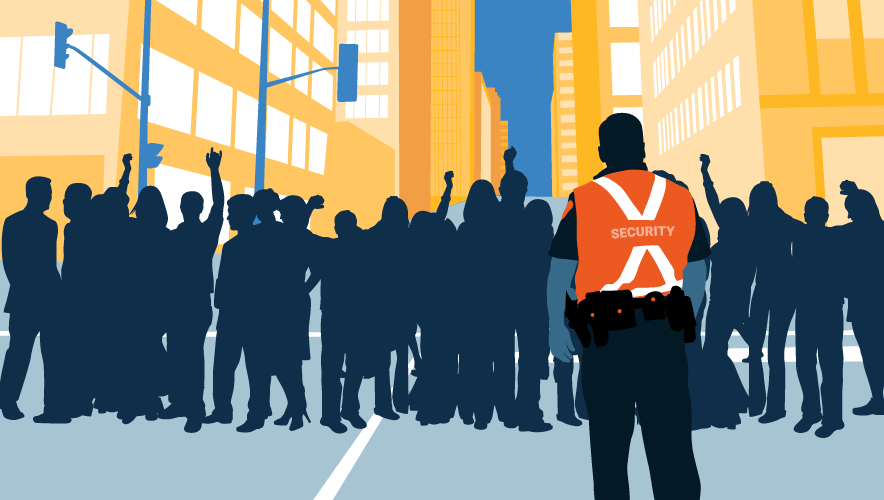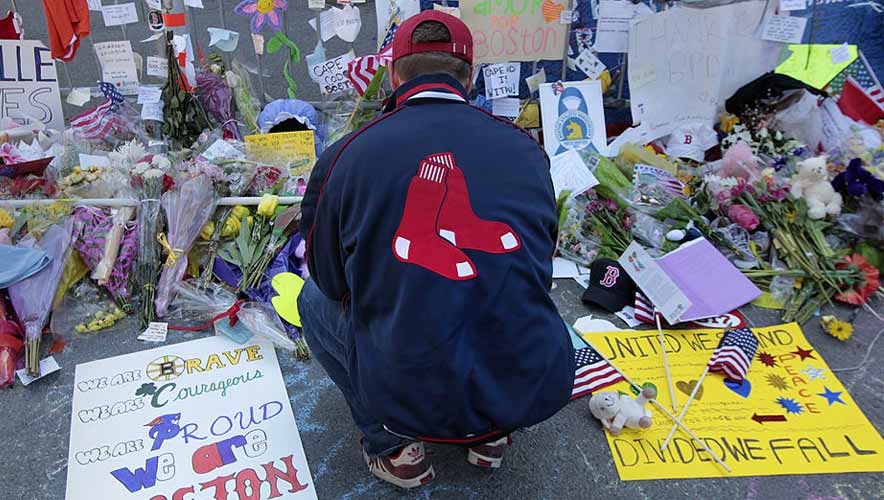5 Steps to Improve Situational Awareness and Public Safety at Large Events
The success of maintaining public safety at large events relies heavily on the training, equipment, and situational awareness of the event’s guardians.
Coordinating complex activities involving multiple partners—including local, state, and federal authorities, non-government organizations, and private businesses—presents challenges in achieving seamless coordination among diverse personnel. In times of disaster, such as the Boston Marathon bombing 10 years ago, an already-intricate safety system can be stressed and descend into chaos.
In crisis situations, shock, panic, and misinformation prevail. Limited resources to respond can be quickly exhausted when the public, the press, and first responders are deluged with incorrect or partial data. The speed at which situational awareness is regained, particularly in the immediate aftermath, determines the severity of the event’s impact. Even highly trained security officers may experience confusion and a lack of clarity when faced with a life-or-death scenario involving the public’s survival.
To optimize response and mitigate the impact of an event, incident commanders should consider taking five critical steps.
Develop and Practice a Detailed Plan
Prior to a large public event, a designated commander should prepare a comprehensive plan outlining how officers will respond to a range of potential crisis scenarios. This plan should be as important as traffic and basic safety plans.
Consider the information needs of different officers and outline a clear decision-making process for each step. Remember that an incident may not only be human-made; there could, for instance, be a significant weather event that can impact safety. Consequently, the plan should be coordinated with other first responder agencies like fire and rescue.
It is crucial to conduct tabletop exercises and active drills to better prepare officers for crisis situations. By approaching these scenarios not as “if” but “when,” security practitioners and first responders can visualize and practice taking immediate action, improving their responsiveness and resilience.
But developing the plan is not enough. The force must undertake tabletop exercises and active drills so that officers are far better prepared in the event something does occur. Practicing the physical steps one would take imprints the memory in the brain and makes the entire team more responsive and resilient.
Commanders must also prepare themselves for fast action. In reflecting on the Boston Marathon bombing incident during a presentation at the 2019 Complex Coordinated Attack Symposium, former Superintendent-in-Chief of the Boston Police Department Daniel Linskey shared that a commander can realistically only issue three to five instructions in the first moments after an incident. Those instructions must be uncomplicated directions that can begin to control the chaos and have a big impact on what occurs next.
For instance, the commander may instruct officers to practice radio discipline and not speculate during communication; to remain on their post unless they can see exactly what is causing harm; to position along pre-determined evacuation routes; or to use different radio channels in different physical locations.
Building those first few instructions into the training program will allow them to be implemented faster.
Balance Resources
During an incident, the top priority is stopping the threat. The commander must collaborate with field officers to gather sufficient information to locate and neutralize whatever is happening. This flows into managing the aftermath, including attending to injured individuals. During the planning phase, be sure to assess where officers need to be physically stationed in different crisis scenarios.
Additionally, anticipate the resources that will be required to clear traffic blockages caused by frightened individuals to enable the movement of rescue vehicles. Visualizing ambulance routes, helicopter landing locations, and other critical elements during drills ensures swift onsite control of chaos in real incidents.
Experienced law enforcement professionals understand that regular operations continue during large events and even crisis situations, and long-lasting responses deplete resources rapidly. The police department can be easily overwhelmed by these incidents, limiting its effectiveness to provide essential services. Prior to the event or incident, it is important to establish strong mutual aid agreements with partner jurisdictions. It is not enough to just have the agreement in place. Partner organizations should be included in event planning and exercises to optimize resource support integration.
Manage Information and Communication
In times of panic and information uncertainty, accurate and timely communication is crucial. Misinformation can jeopardize officers’ and the public’s safety.
Pre-event preparation should include establishing a communication strategy and identifying designated communicators. Prepare pre-scripted statements for the press and social media to ensure consistent messaging. An established and trusted social media presence is essential to control the message and limit disinformation.
However, managing information and building trust amidst chaos is challenging. Commanders must possess the ability to discern between truth and misinformation circulating in various channels. Modern technologies that quickly collect and analyze on-scene information, such as from GPS data, cameras, wearables, and other connected Internet-of-Things devices, are indispensable for sifting through vast amounts of data and identifying actionable information.
Maximize Technology and IoT Assets
Security teams already utilize various connected devices, including radios, smartphones, body-worn cameras, drones, and license plate/object recognition solutions. While valuable individually, these technologies alone cannot provide the breadth of situational awareness needed for optimized decision-making during crises.
Integrating these inputs into a unified technology platform offers incident response leaders streamlined access to real-time and near real-time data. All-in-one technology platforms can provide a single-pane-of-glass view, offering instant visibility into the location of resources and access to diverse data sources.
For example, commanders can click on deployed cameras represented on a virtual command board and view live feeds. This technology simplifies the safety system, providing guardians with accurate and actionable data that optimizes incident management and aids in subsequent investigations.
Be Ready for the Inevitable
Significant changes have taken place in the 10 years following the Boston attack. Regrettably, we have witnessed an alarming increase in instances of violence at public events. Over 30 indiscriminate mass killing events have occurred since 2013, including the January 2023 Monterey Park mass shooting during a Lunar New Year celebration. Other recent crisis examples include the May 2020 Minneapolis riots and the January 2021 U.S. Capitol riot. The unpredictable nature of these situations demands that modern law enforcement agencies remain prepared to confront any crisis that may arise on their watch. It is imperative for security practitioners to proactively equip themselves with the necessary resources, training, and strategies to effectively address and mitigate potential threats.
By embracing a proactive approach that incorporates technology as an enabler, security practitioners can enhance public safety and minimize the impact of such unforeseen events. Technology advances during the last decade offer security leadership faster—and better—information so they can make informed decisions swiftly.
Innovative solutions will enable security teams to enhance situational awareness, streamline operations, and respond quickly to emerging threats. Leveraging advanced technology will equip these guardians with the tools they need to proactively identify and address potential risks, ensuring the safety and well-being of the communities they serve.
Together, the power of modern technology employed with effective tactics will ensure guardians can fulfill their critical mission of protecting the public with utmost efficiency and effectiveness.
Paul Maguire is the co-founder and CEO at Knowmadics. He is a former intelligence officer with multiple deployments to the Persian Gulf and Southeast Asia. His expertise lies in specialized areas such as counter-terrorism, counter-drug, and personnel tracking and recovery operations.












